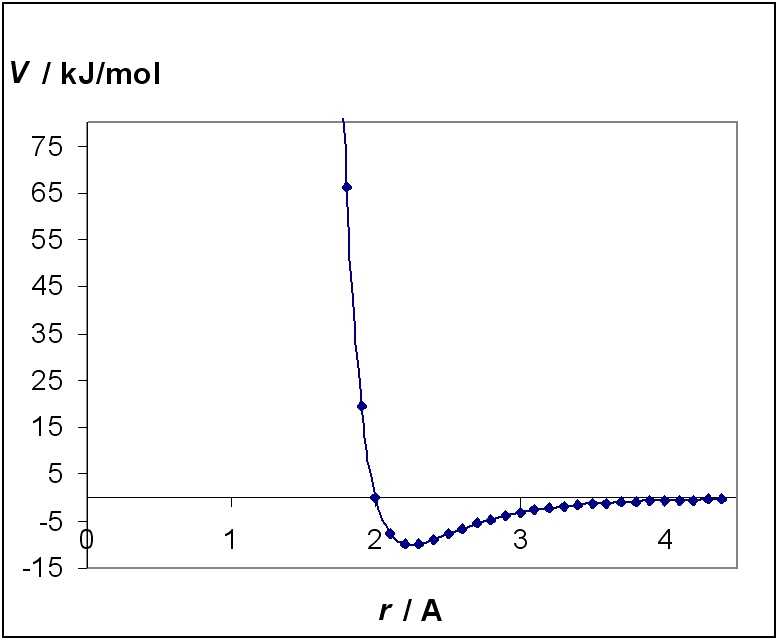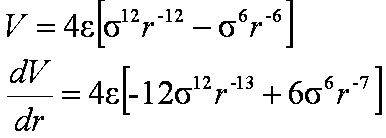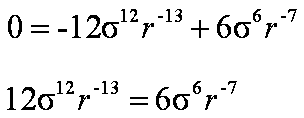1. Answer all parts (a) to (d). All parts carry equal marks.
Determine the following:
(a) dy/dx if y = 27x5
(b) du/dz if u = 3.2z2 + 6z - 5.7
(c) dβ/dθ if β = 8cos θ
(d) ![]()
(4 marks)
2. Answer all parts (a) to (d). All parts carry equal marks.
Differentiate the following functions with respect to x, and simplify the result where possible:
(a) y = (5 - 3x)(2 - 20x)
(b) y = 2.8x56 sin x(c) 
(d) y = 3 ln(3x2 - 6x5)
(8 marks)
3. Answer all parts (a) to (d).
The Lennard-Jones potential used to describe the van der Waals interaction energy between two neutral molecules is given by the following equation:

where ε is the well depth and σ is the hard-sphere radius of the molecule. Measurements of V versus r are given in the table.
| r / Å | 1.8 | 1.9 | 2.0 | 2.1 | 2.2 | 2.3 | 2.4 | 2.5 | 2.6 |
| V / (kJ mol-1) | 66.4 | 19.6 | 0 | -7.58 | -9.83 | -9.82 | -8.91 | -7.74 | -6.57 |
(a) Plot these data as a graph and estimate the co-ordinates (rmin, Vmin) of the minimum of the curve.
(4 marks)
(b) Differentiate the equation for the Lennard-Jones potential, and obtain an expression for rmin in terms of σ.
(4 marks)
(c) Put this expression for rmin back into the original Lennard-Jones equation, and calculate an expression for Vmin in terms of ε. Compare this to your estimate from (ii) and hence obtain a value for ε.
(2 marks)
(d) Using your estimate for rmin from (a) and your expression for rmin from (b), calculate a value for σ.
(2 marks)
1)
a) dy/dx = 135x4 b) du/dz = 6.4z + 6
c) dβ/dθ = -8sinθ d) ![]()
2)
a) Product Rule: (5 - 3x).(-20) + (2 - 20x).(-3) = 120x - 106
b) Product Rule: 2.8x56(cos x) + (sin x)(156.8 x55) = 2.8x55 (xcos x + 56sinx)
c) Quotient Rule: 
d) Funct. of a Funct.: 

3) (a)

The graph shows that rmin should be between 2.2 and 2.3 Å, and Vmin should be around -10 kJ mol-1.
(b) Rewrite it as:

At the minimum, dV/dr = 0, so 
Dividing by 4ε: 
Dividing by 6, σ6 and r-7: 
Sixth rooting:  i.e rmin = 1.122σ
i.e rmin = 1.122σ
(c) Substituting back this value for rmin into the original LJ equation we get:

Cancelling the σ's, we get:

![]()
So Vmin = - ε, which should be around -10 kJ mol-1 (which isn't surprising as ε is called the 'well depth', so should be the minimum of the curve!)
(d) Using rmin = 1.122σ and a value from the graph of rmin ~ 2.24, we get σ = 2 Å (which you could also get from the fact that when V=0 in the LJ equation, r = σ, so the graph crosses the axis at r = σ, which from the graph is 2 Å).